How to Produce a Kamado Grill: A Step-by-Step Guide to Crafting the Ultimate Barbecue Experience
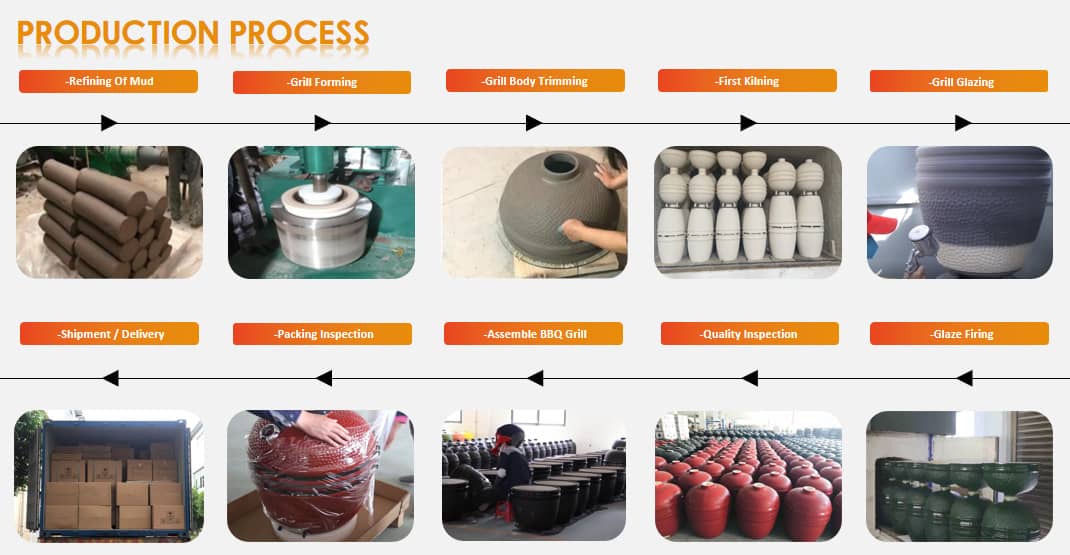
Introduction:
The Kamado grill is renowned for its exceptional cooking capabilities and high-quality craftsmanship. If you’ve ever wondered how these incredible grills are made, you’re in luck. In this guide, we will take you through the step-by-step process of how the ceramic Kamado grill factory to producing a Kamado grill, providing insights into the meticulous craftsmanship and attention to detail that goes into creating the ultimate barbecue experience.
Step 1: Design and Planning
The production of a Kamado grill begins with meticulous design and planning. Experienced designers and engineers collaborate to create the grill’s blueprint, taking into consideration factors such as materials, dimensions, airflow control, and cooking surface area. This stage sets the foundation for a well-constructed and efficient Kamado grill.
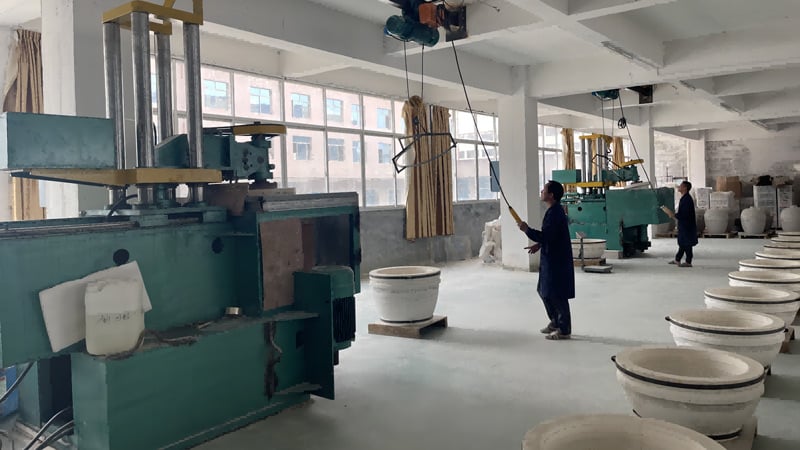
Step 2: Mold Creation
Once the design is finalized, molds are created to shape the ceramic or clay components of the grill. The molds are made using precise measurements to ensure consistency in the final product.

Step 3: Formula Test
It is well known that ceramic kamado grills are made from different layers of clay and minerals, and each layer has different properties. As a result, we must test the ceramic grill formulations for each batch of clay, and manufacturers can ensure that the product has optimal performance, durability, consistency, and safety to provide consumers with a quality product.
Step 4: Refining Of Mud
Refining the mud used in Kamado grill production to squeeze out excess air from the moist soil and soften the soil again, helps ensure a high-quality, consistent, and durable end product. It removes impurities, improves texture and workability, and creates a homogeneous mixture, resulting in a well-performing and aesthetically pleasing grill.
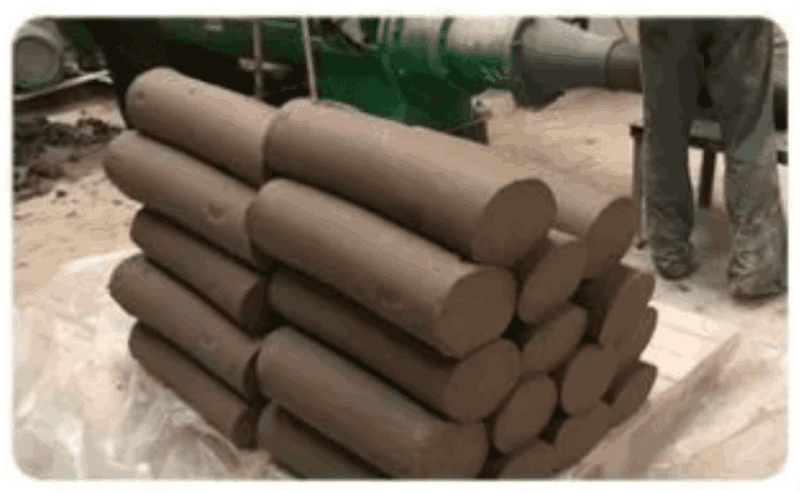
Step 5: Grill Forming
For the grill body, a precise mold is created, allowing for the formation of the distinctive egg-shaped design that is characteristic of a Kamado grill. Skilled craftsmen pour heat-resistant ceramics or refractory materials into the mold, the machine can ensure a uniform stable, and sturdy construction.

Step 5: Grill Body Trimming
Preparation: Ensure that the ceramic or clay components of the grill body have been properly dried to their desired hardness. This makes them ready for the trimming process.
Marking: Use a tape or template to mark trimming areas like the top opening, bottom edge, etc.
Tools: Select appropriate tools (knife, carving tool, rasp) for precision and control.
Trimming Technique: Shave small portions evenly and gradually to maintain symmetry and dimensions. Move smoothly to protect the ceramic or clay.
Checking and Refining: Periodically test-fit the lid or components, adjusting as needed. Multiple refinements may be required.
Smoothing and Finishing: Attain desired dimensions, then use sandpaper or sponge to create a smooth and appealing surface.
Cleaning: Thoroughly remove debris, dust, and clay residue to prepare for further processes like glazing or firing.
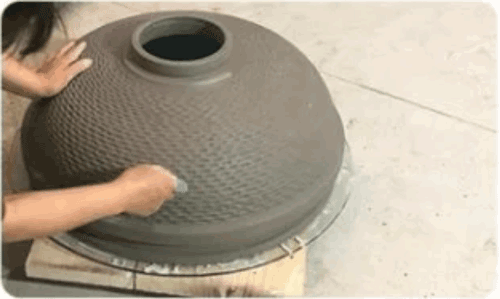
Step 6: First Kilning
The term “First Kilning” is not commonly used in relation to the production of a Kamado grill. However, I can explain the general process of kilning or firing ceramics, which is an essential step in manufacturing a Kamado grill.
After the clay or ceramic components of the Kamado grill have been shaped and trimmed, they need to undergo a firing process to transform them into a durable and heat-resistant material. This firing process typically consists of two main stages: bisque firing and glaze firing.
*Bisque Firing: The shaped components are placed in a kiln and subjected to a low-temperature firing, usually between 900 and 1000 degrees Celsius. This firing removes any remaining moisture from the clay and strengthens it. It also converts the clay into a porous, but solid, ceramic material known as “bisque ware” or “biscuit.”
In order to make our ceramic grills have stronger performance to cope with different usage scenarios, our sintering temperature is 1230℃/2246℉.
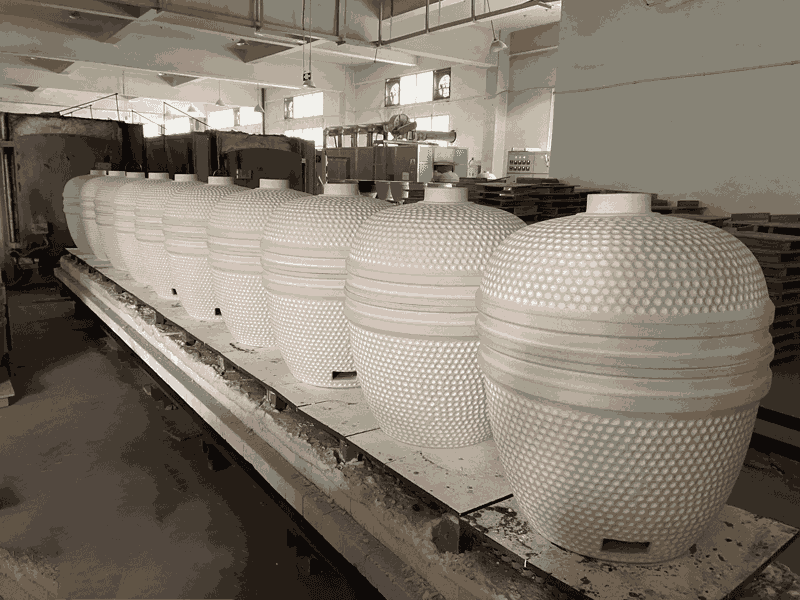
Step 7: Grill Glazing & Glaze Firing
Once the “bisque firing” is complete, the components are coated with a glaze, a liquid mixture of minerals and pigments. The glaze not only adds decorative elements but also provides a protective and waterproof barrier. The glazed components are then fired in a kiln at a higher temperature, typically between 1100 and 1300 degrees Celsius. This high-temperature firing causes the glaze to melt and fuse with the underlying ceramic surface, creating a smooth, glossy, and durable finish.
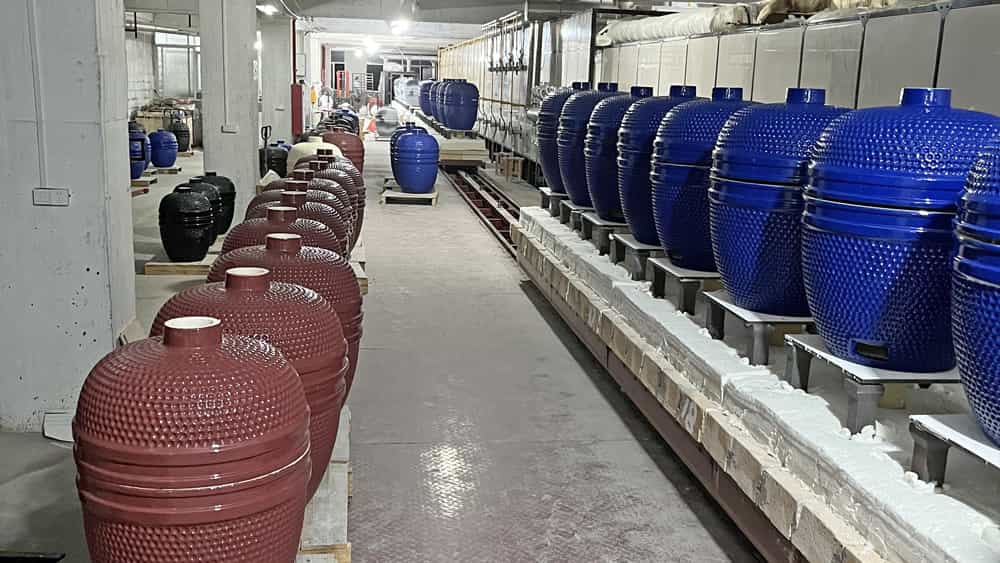
Step 8: Quality Inspection
This inspection is a crucial component of the semi-finished ceramic body assessment, among numerous others. During this stage, any glazed blanks that are found to be defective are promptly discarded, as they fail to meet our stringent quality standards. Discarding a defective product at this juncture signifies that all the arduous effort and dedication invested thus far would amount to nothing.

Step 9: Assemble BBQ Grill
In our Ceramic Kamado grill factory, the assembly process of a Kamado BBQ grill involves meticulously following the factory’s specific assembly instructions to ensure all components are correctly fitted and securely fastened. Quality checks are conducted to verify proper alignment and functionality before the grill is deemed ready for shipment.
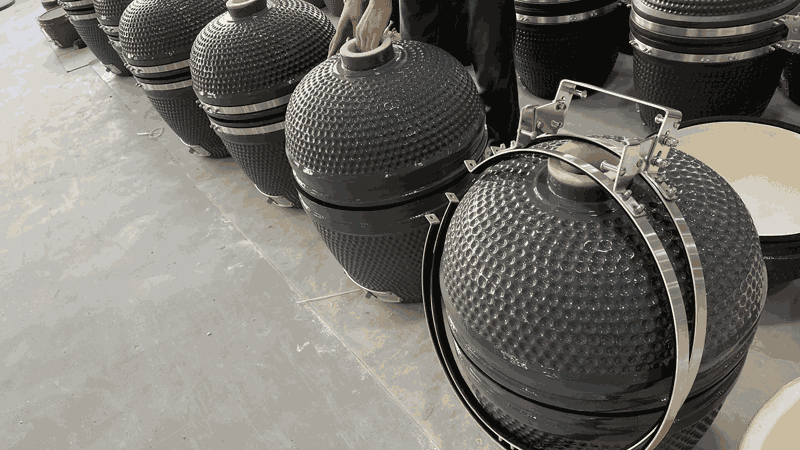
Step 10: Packing & Inspection
As a reliable ceramic kamado bbq grill supplier, the packing and inspection process includes carefully packaging the Kamado BBQ grill, ensuring all components are protected and secured for transportation. A thorough inspection is carried out to verify the grill’s quality, including checking for any defects or missing parts, before it is released for shipping.

Step 11: Shipment / Delivery
In the final stage of the process, Our Kamado grill factory arranges shipment or delivery of the assembled grills according to customer orders. The grills are carefully packaged, labeled, and loaded onto trucks or shipped through logistics partners to ensure timely and safe delivery to customers worldwide.
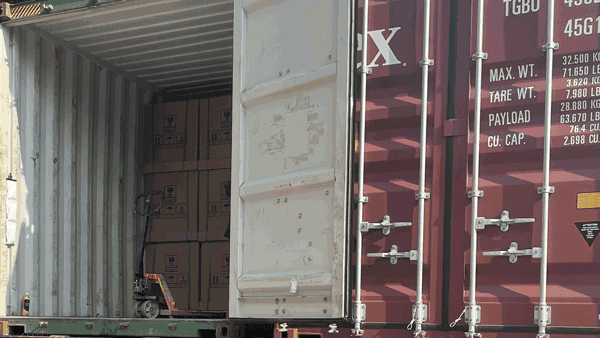
Conclusion:
Producing a Kamado grill is a labor of love that requires careful craftsmanship and attention to detail. From the initial design and material selection to the molding, assembly, and finishing touches, every step is vital in creating the ultimate barbecue experience. Whether you are a grill enthusiast or seeking the perfect outdoor cooking solution, our Kamado grill’s production process ensures a premium and long-lasting product that will elevate your grilling skills to new heights.

